Winter break
Exploring heritage, Learning art
Heritage Walk
By the end of first semester, I had struggled in finalising my narratives and I believed coming back home to Ahmedabad, and visiting the heritage sites here I would be able to get more information on my narratives from authentic sources. I booked the heritage walk from this website. It was a 2-hour walk, however the heritage walk turned out to be about the architecture and urban planning of the city rather than the myths or legends. From the tour guide and some of the other locals there I was suggested to refer to any books or articles that I could find. Currently I have two books that I can refer to - Ahmedabad, From Royal City to MegaCity by Achyut Yagnik and People Called Ahmedabad by Nisha Nair-Gupta.
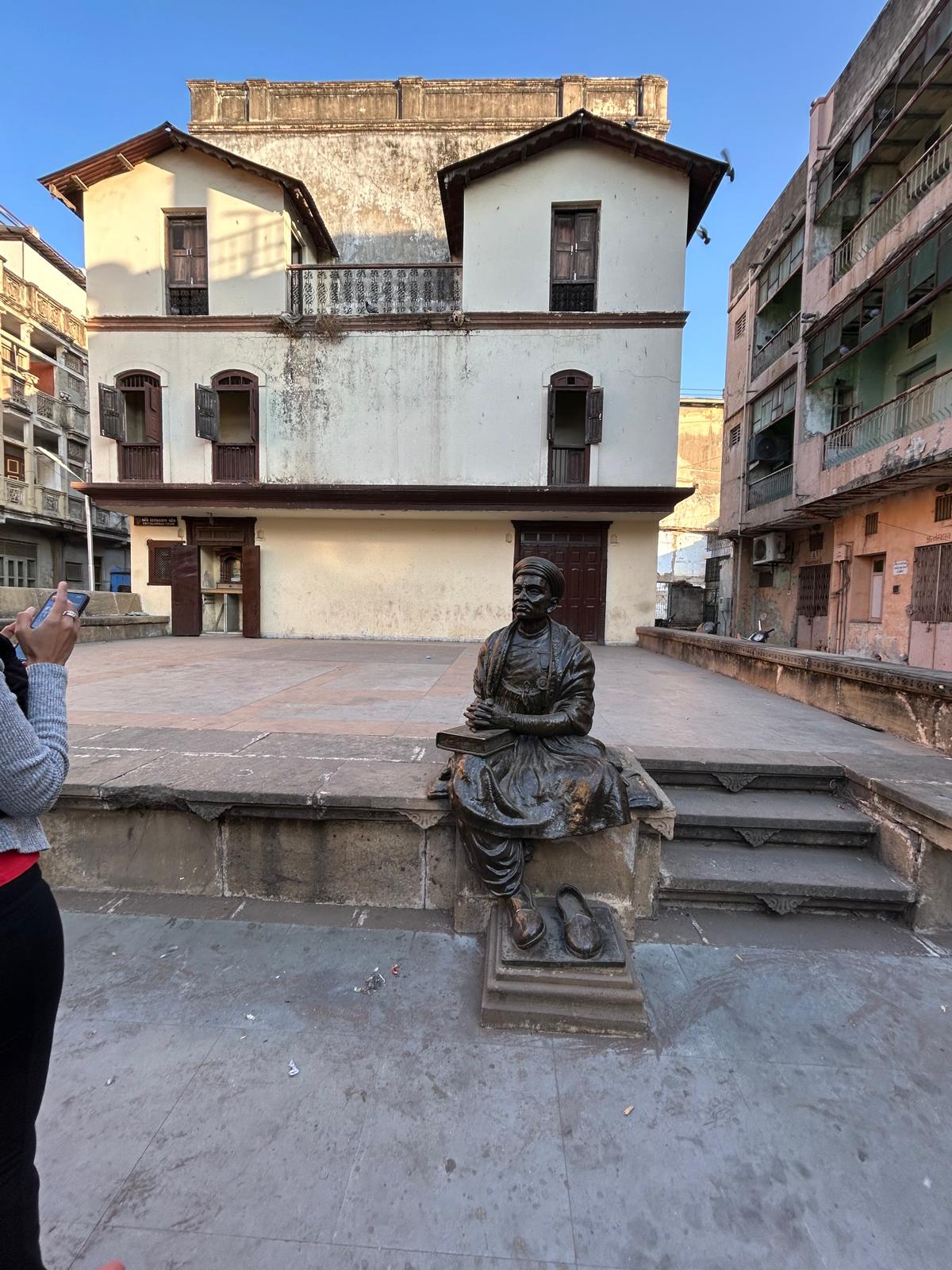
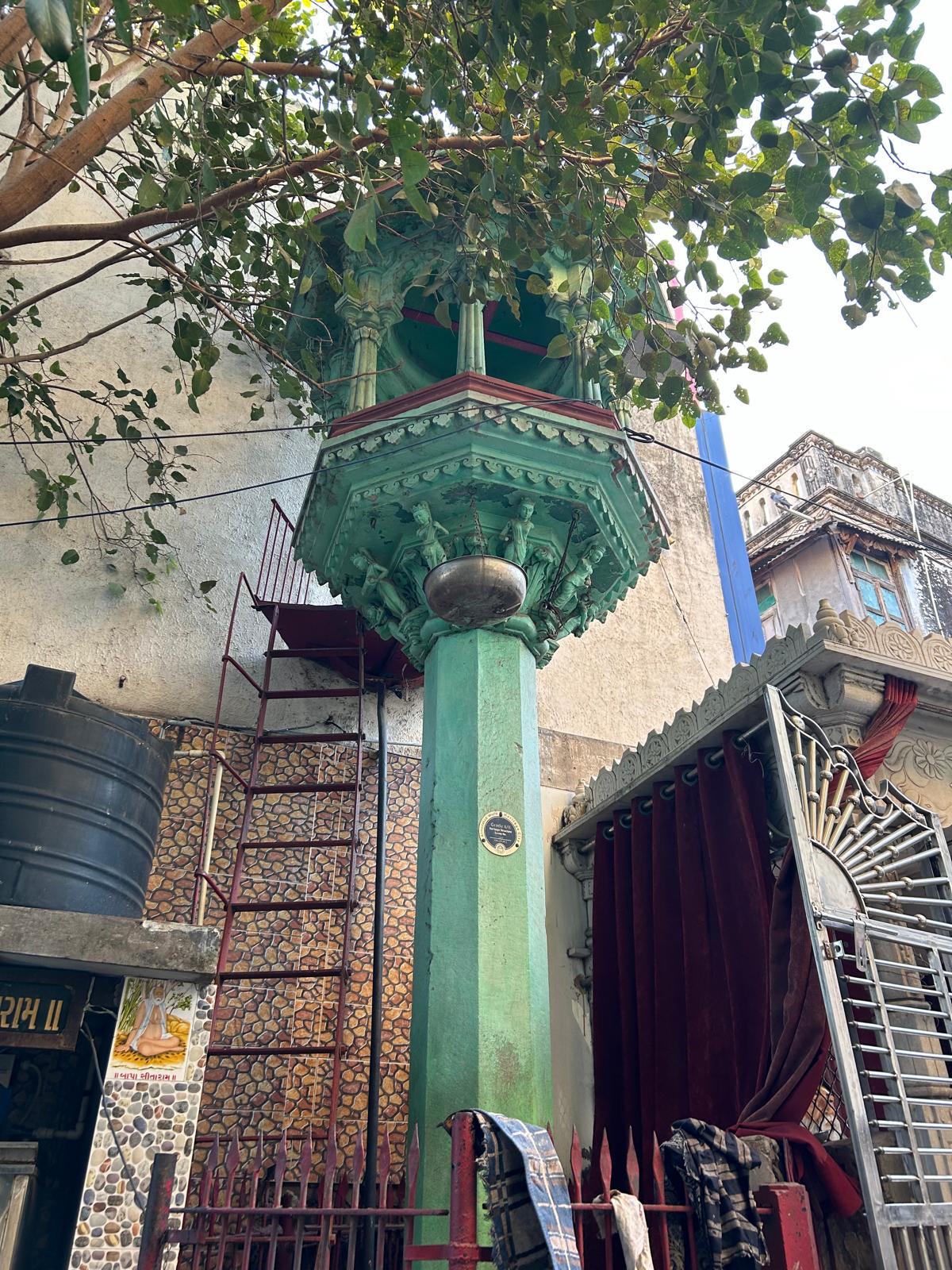
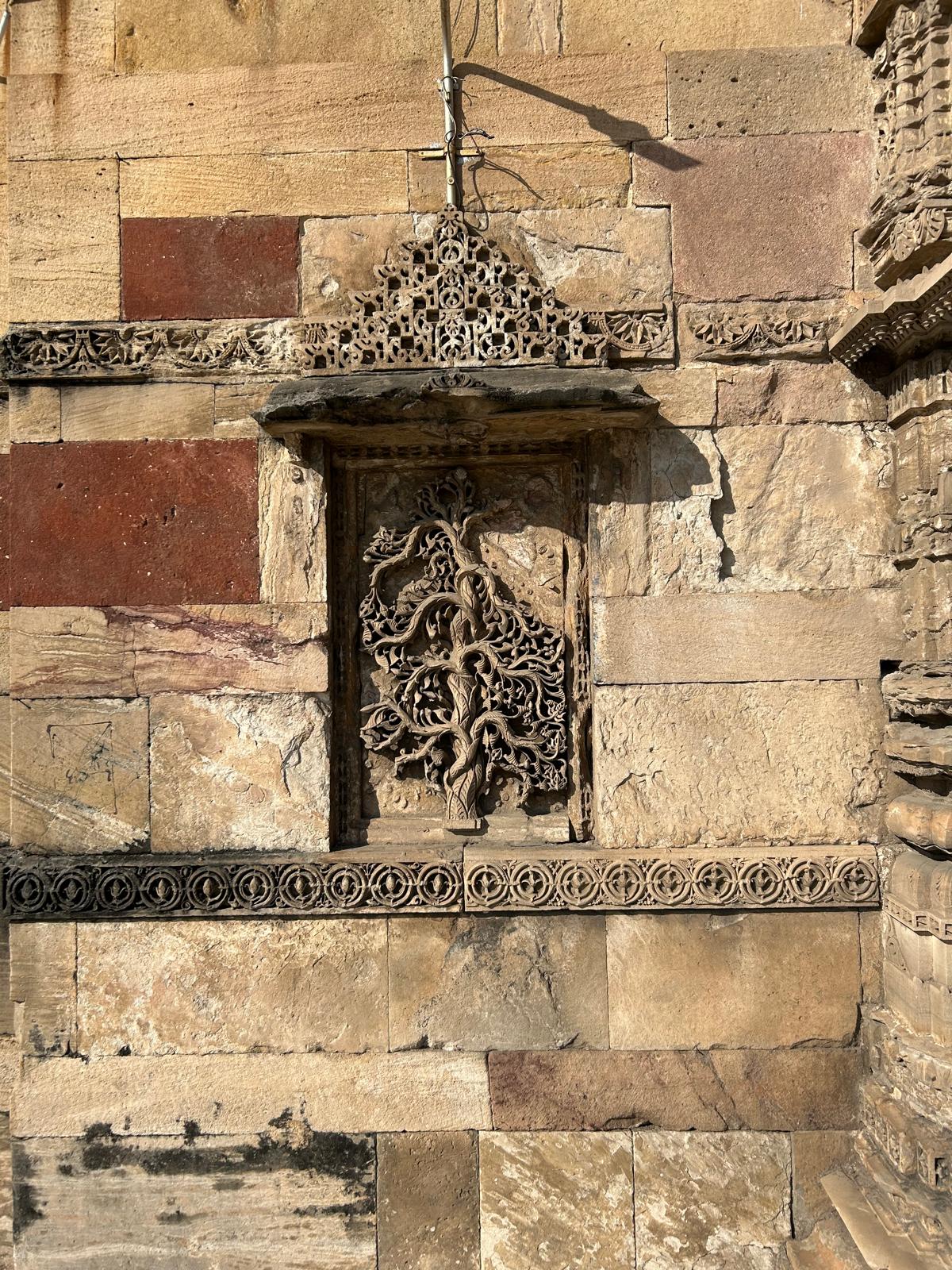
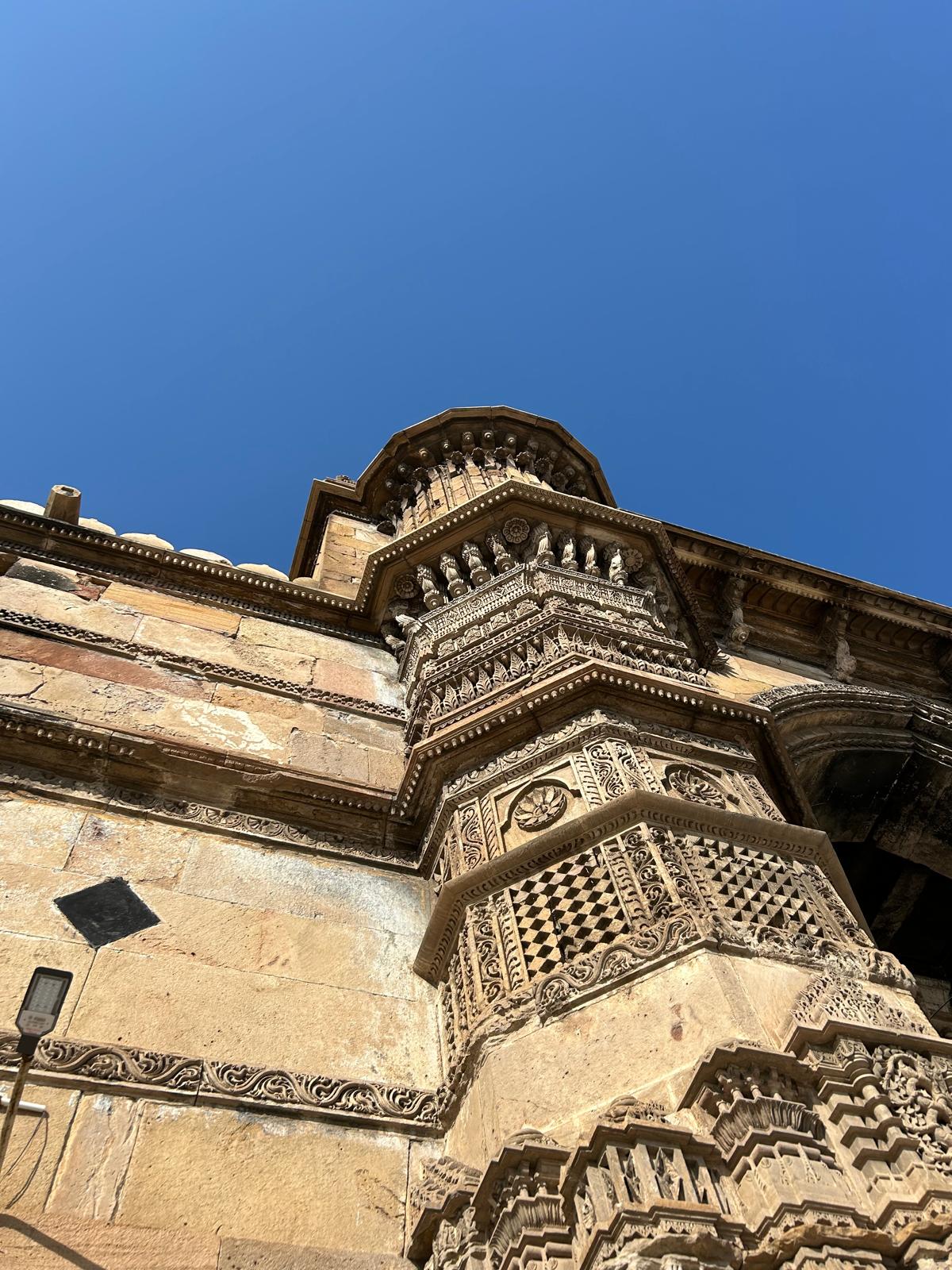
Mata ni Pachedi (Behind the mother goddess)
Mata ni Pachedi translated to ‘Behind the mother goddess’ is a traditional Gujarati art form which is performed to worship the Mother Goddess’. It is an art started by a community called ‘Vaghris’ upon being denied entry in temples. This form of art is painted on cotton fabric with natural paint. Mostly made in red, yellow and black colour.
During the semester break in December, I attended a workshop to learn the art form - Mata ni Pachedi. The workshop was hosted by Sumit Chitara. Sumit Chitara is an artist who has years of experience painting this art form and he has been hosting workshops and making these paintings for sale since 2018. The process of painting this art form is quite long. The paint itself takes about 10-15 days to form. First, I drew on the cotton fabric with a pencil and then traced the sketch with paint using a bamboo stick. It was trickier than I thought it would be, to paint with a bamboo stick. Overall, just drawing the sketch took 2.5 to 3 hours. I had made the sketch with a reference that was hung on the wall. I have planned on tracing all the negative spaces with red-colour but it would have taken more time so the Mr. Chitara suggested that I just paint the red colour in the center.
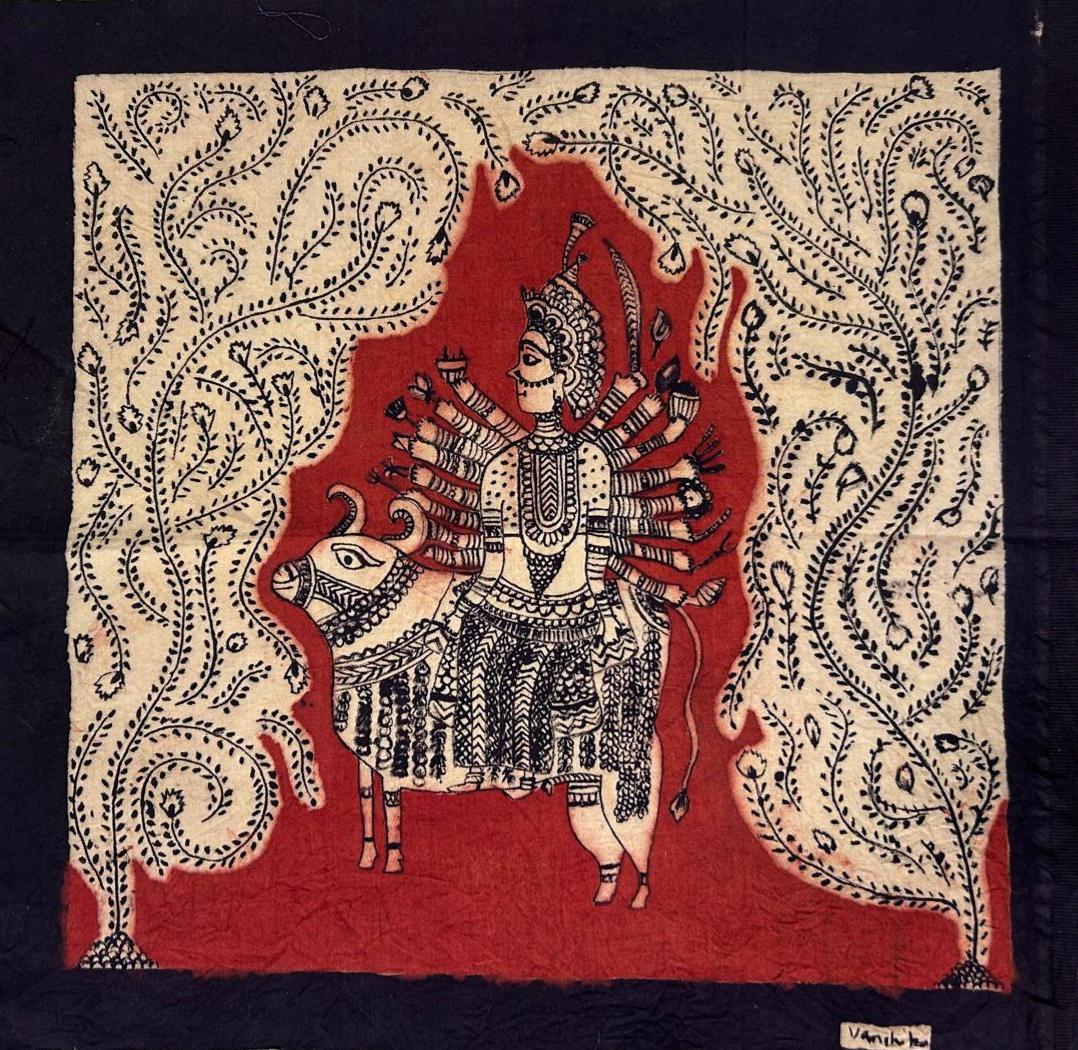
Block-printing
For the block printing, the same paint is used as the one in Mata ni Pachedi. Mr. Chitara usually submits his drawings to block makers, who carve the design on slabs for him. As Mr. Chitara already had designs carved on the slab, the block printing workshop took around 15 to 20 minutes. The paint was put in a basket and there were layers of cloth and a net put on the paint so that it doesn’t go into the hollow spaces on the slabs.
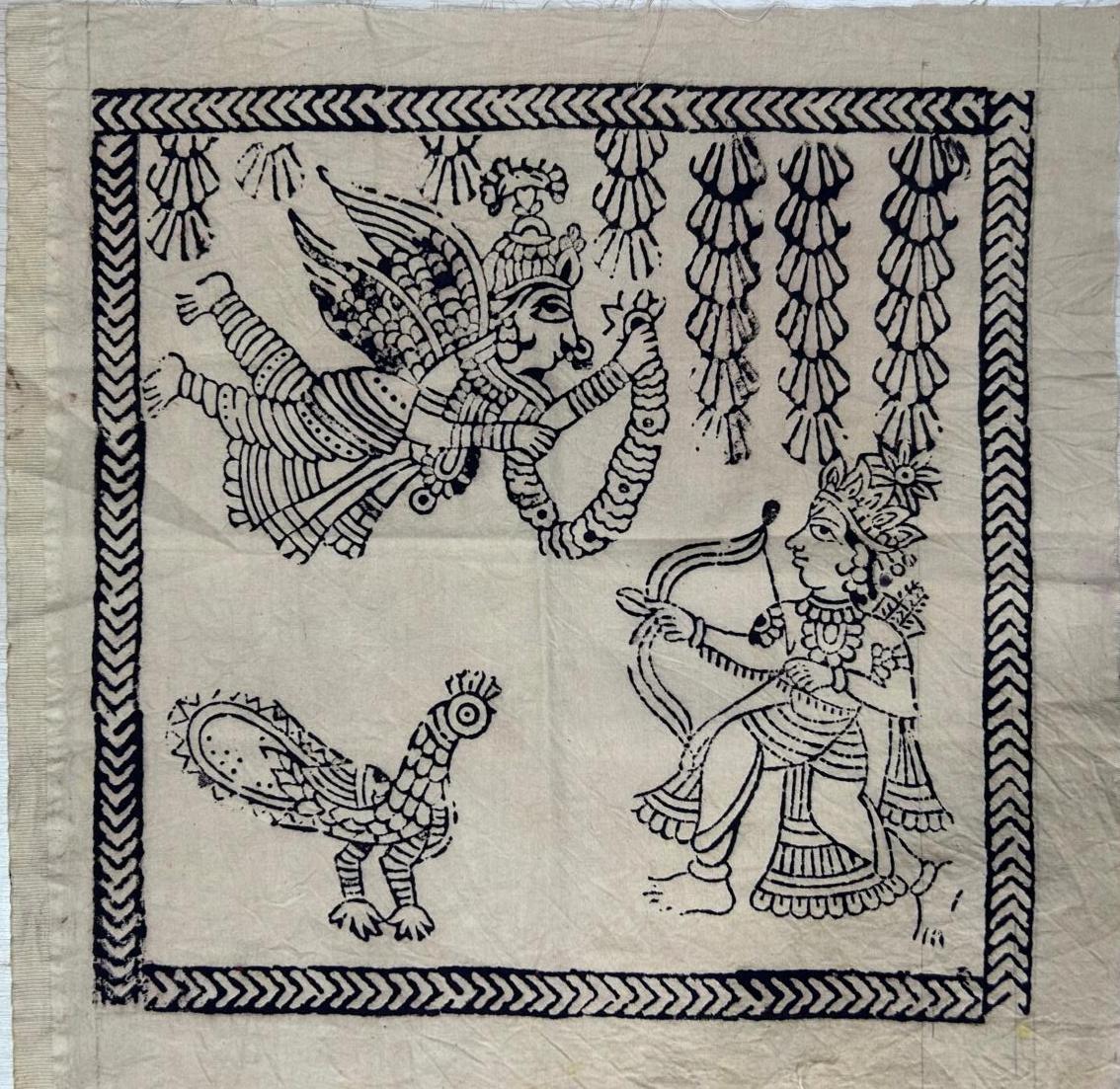
Final step in the painting and the block print
Both the painting and the blockprint have similar processes once the designs are on the fabric. First they are put to dry in the sun and then rinsed in water, so that left-over particles from the paint are off of the surface of the painting (to avoid spreading colours) and then the fabrics are boiled in water filled with rosemary seeds so that they enhance the colours on the painting. And once the colour shade takes place it is put to dry in the sun. Originally, before rinsing the paintings in water the painting is kept in the sun for 3-5 days to avoid any spreading of colours but since the workshop took place only for a day, we only dried it for 30 minutes in the sun hence there was little spreading in the colours.
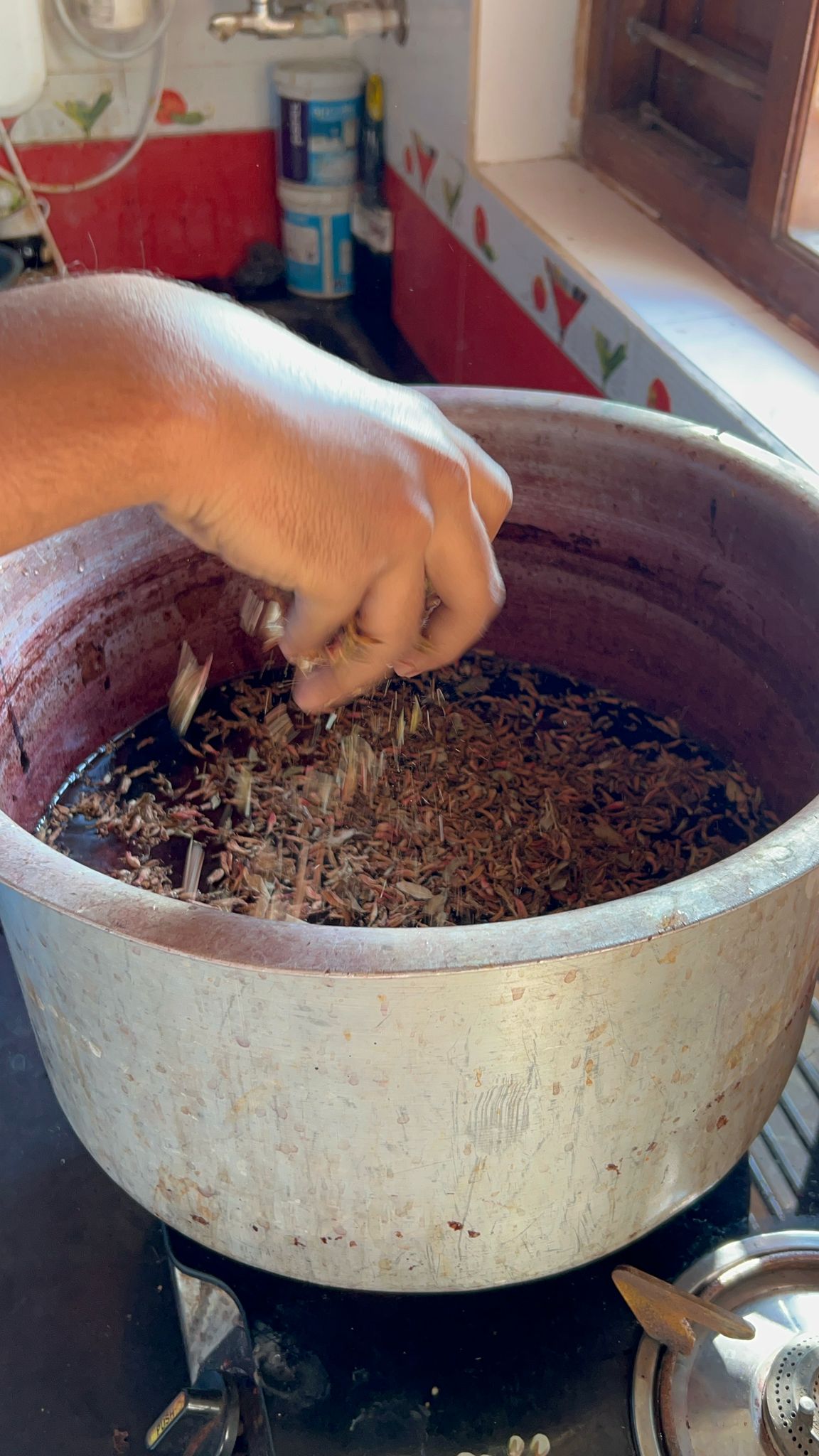
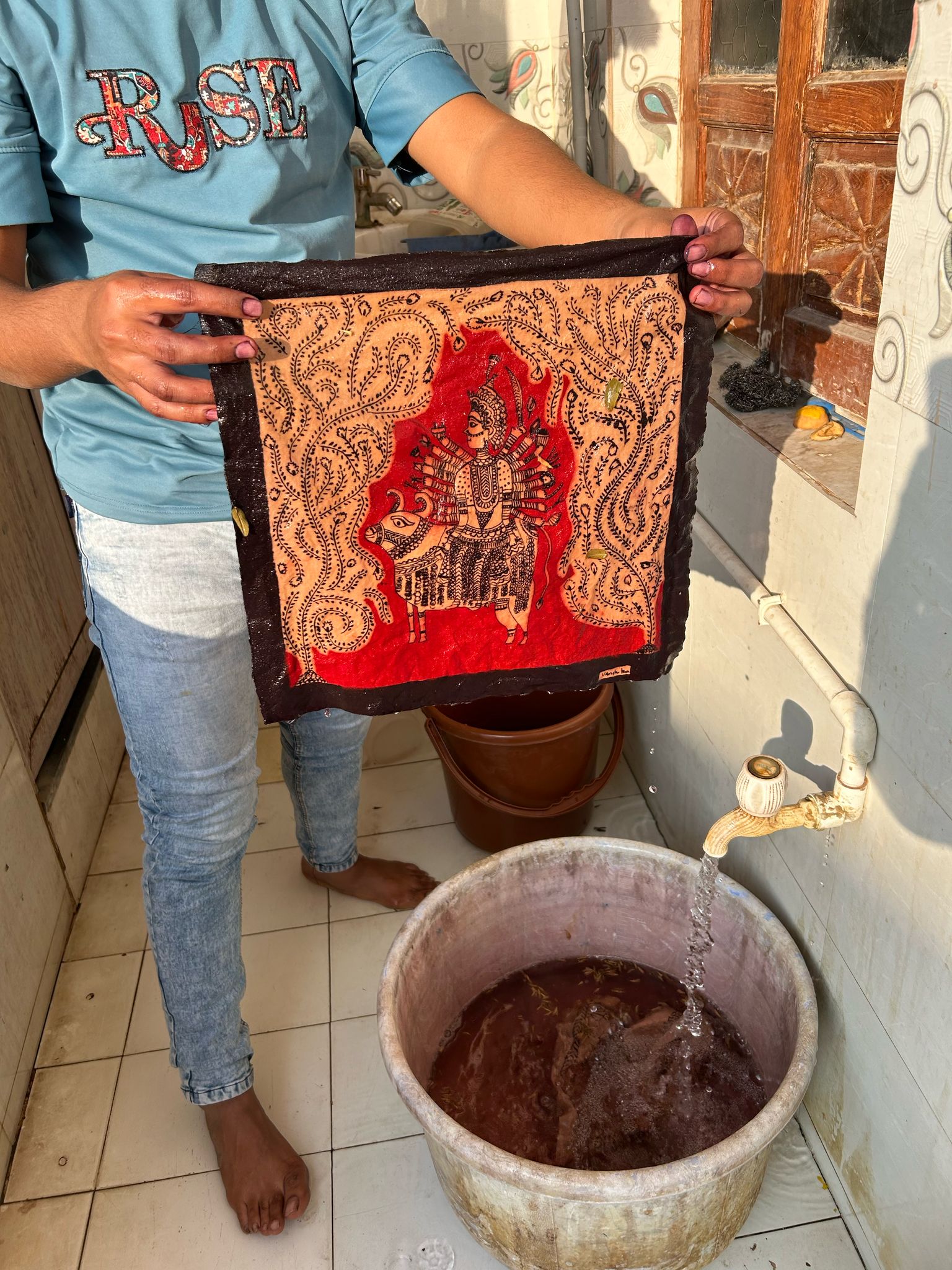
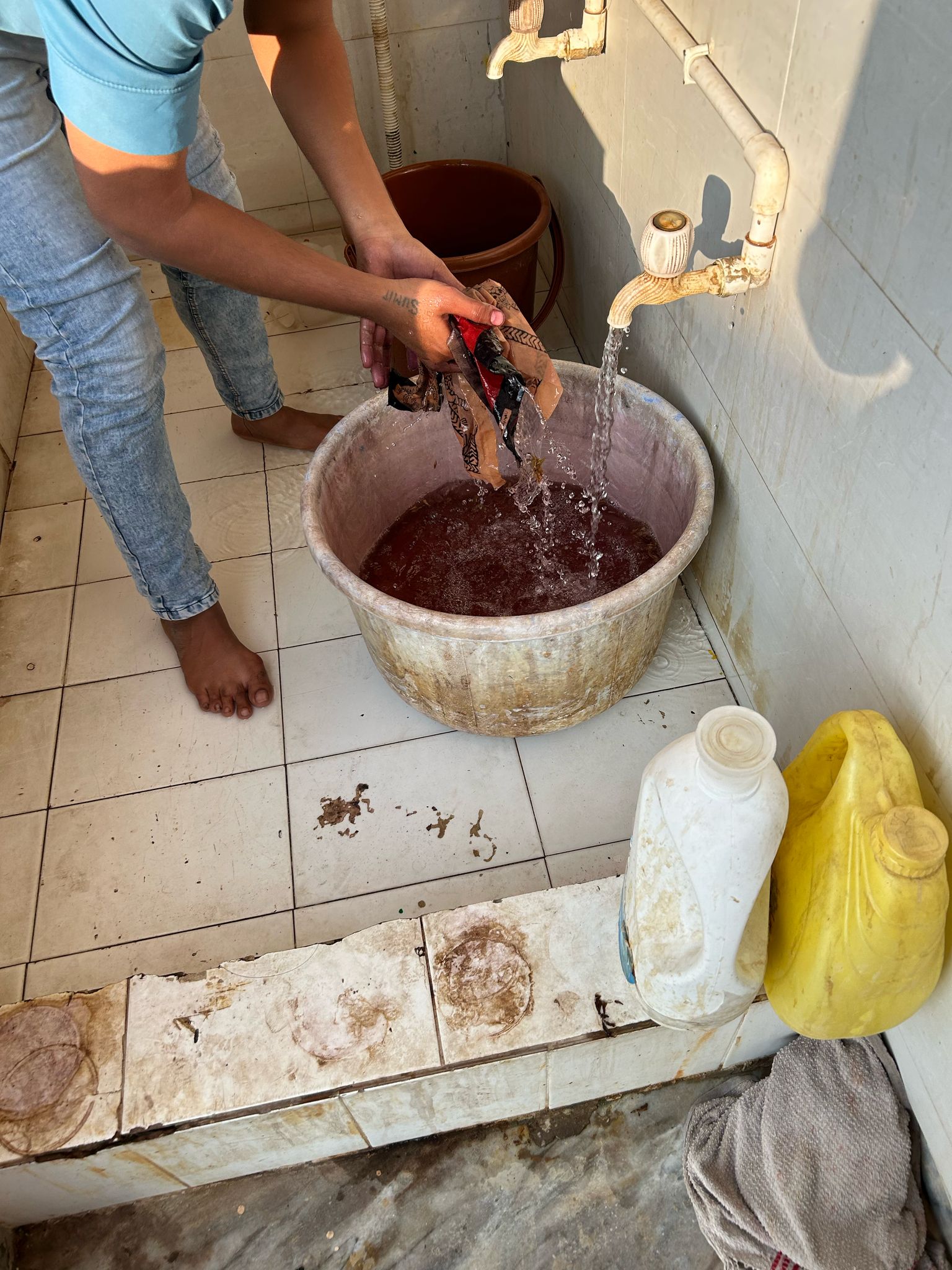
Reflections
The heritage walk didn't aid in finalising narratives or getting more information about the myths however the workshop I attended to learn 'mata ni pachedi' contributed to finalise a visual style for the final artefact. The traditional process of this art form is quite complex and time-consuming but the block-printing exercise was faster than hand drawing and painting. I may not be able to use narutal paints for the final outcome but keeping in mind that the purpose of attending the workshop was more about the visual aesthetic I can focus more on adapting the art style into visuals of this project instead of the tools used for this art style. As established in semester-1 a visual style influences how I conceptualise interaction design on the artefact.